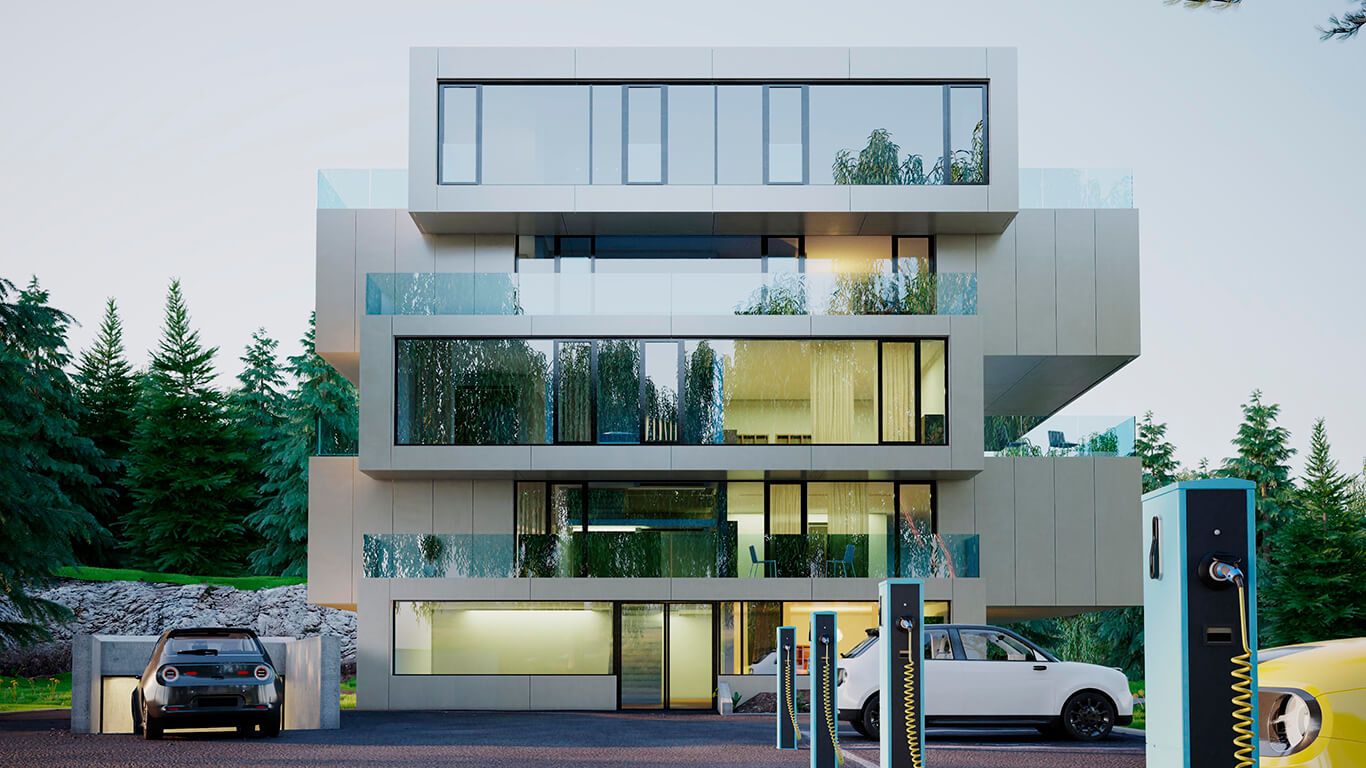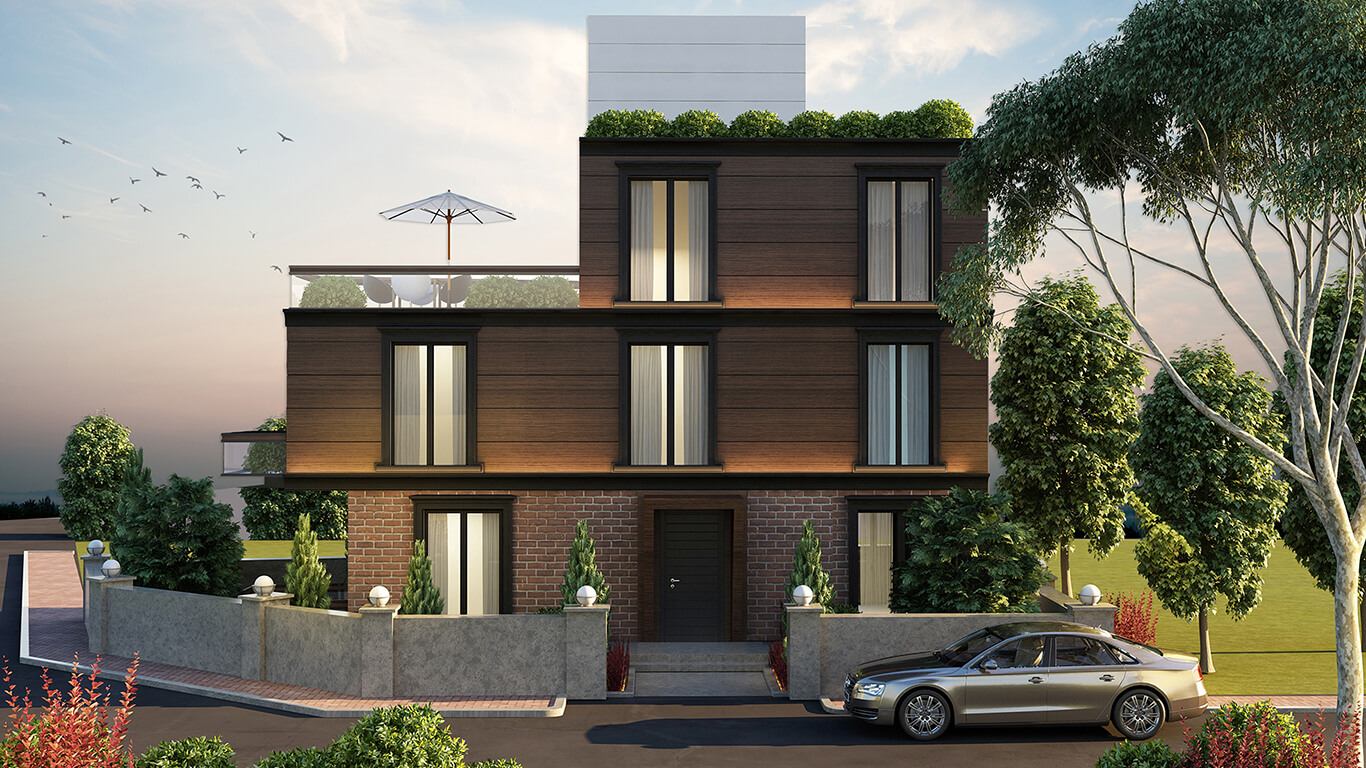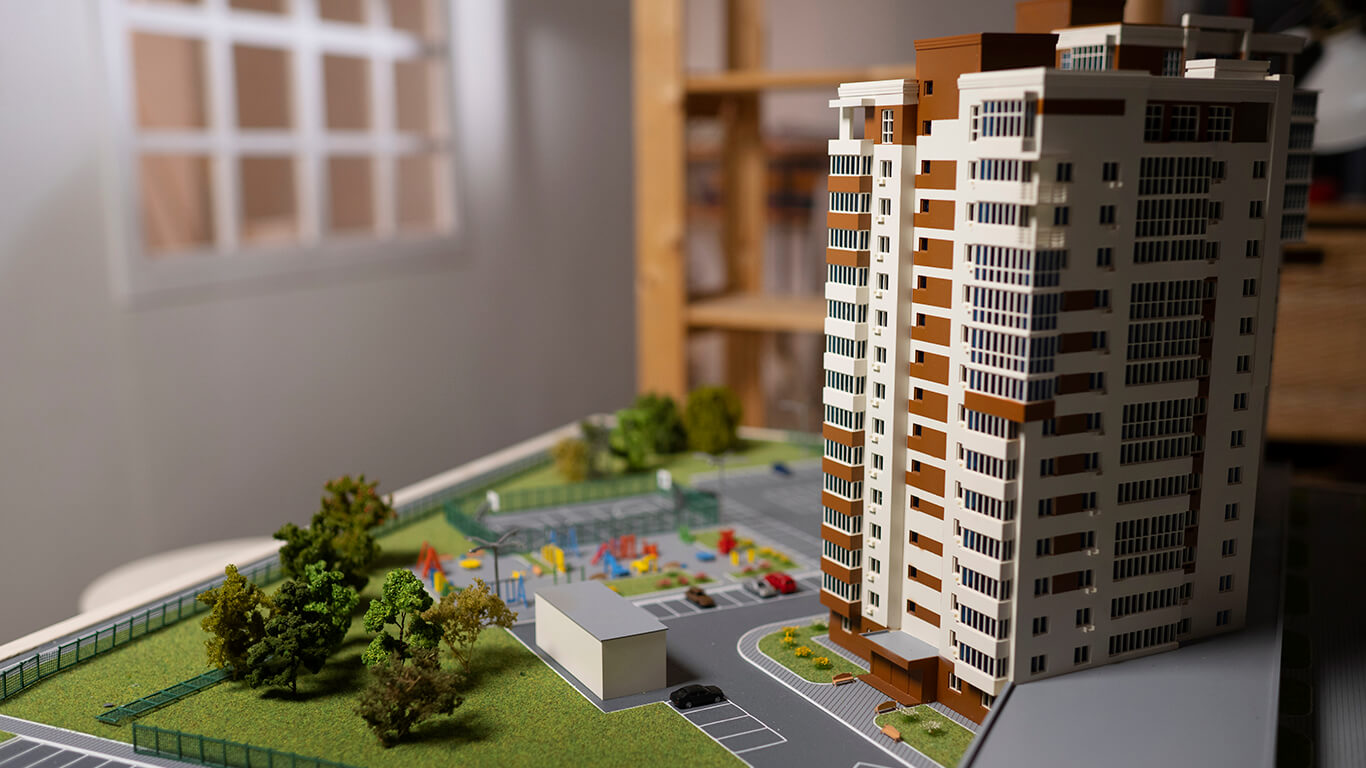.png)
This is the perfect time to raise the topic of growing urgency to address climate change. The consequences of unchecked industrialization, deforestation, and population growth have become disturbingly evident. All because of global warming, natural disasters, and resource depletion. It's clear that we need to fundamentally re-evaluate how we meet our needs, especially energy needs, in more sustainable and environmentally-conscious ways for the 21st century and beyond. At the vanguard are pioneering real estate developers like Mahindra Lifespaces, who are revolutionizing housing through their cutting-edge net-zero homes.
This pursuit of greener solutions has catalyzed remarkable collaborations across scientists, product designers, engineers, architects and other disciplines. The development of net-zero energy homes exemplifies this innovative spirit and desire to craft a cleaner, greener future for human habitation that minimizes our environmental impact.
Net-zero energy homes represent a paradigm shift in residential design thinking. The core principle for these houses is to produce as much renewable energy as they consume. This could be via solar panels, wind turbines, geothermal systems or other renewable sources built into the home itself.
By achieving a net-zero energy balance, these green homes dramatically reduce their carbon footprint and reliance on emissions-heavy grid electricity. But beyond just energy usage, net-zero houses also implement sustainable design. Elements like water recycling, green insulation materials, smart climate control and efficient lighting/cooling used to further lower their environmental toll.
As the world increasingly feels the pressures of climate change and resource scarcity, understanding the significance and design principles of net-zero energy homes is critical. These residences exemplify how human ingenuity can tackle sustainability challenges head-on at the household level. And their growing adoption and scalability have the potential to inspire sustainable practices far beyond just the housing sector.
With rising public environmental consciousness, net-zero homes represent an inspiring vision for cleaner, more symbiotic living in harmony with nature's finite resources. As this innovative housing model goes mainstream, it nurtures hope that humanity can collectively chart a more sustainable path forward for generations to come.
This is a very insightful explanation of what constitutes a true net-zero energy home. I appreciate breaking it down into the core principles:
- Reducing overall energy demand through climate-appropriate passive design and energy efficiency measures is the first priority. Using architectural strategies to naturally heat, cool and light the home as much as possible.
- Any remaining energy needs are met by generating renewable energy onsite via solar, wind, geothermal or other clean sources integrated into the home's design.
- If the home still requires supplementary power at times, that is drawn from renewable energy sources on the grid to maintain a net-zero balance over the course of a year.
The key distinction is that net-zero homes strive to be truly self-reliant and have a neutral carbon footprint by eliminating the need for fossil fuels entirely. This represents a major shift away from conventional homes heavily reliant on emissions-producing, non-renewable energy sources.
As highlighted above, with the urgent global focus on transitioning to low-carbon living to combat climate change, net-zero residences are emerging as a shining example and significant step in the right direction. By producing homes achieving a net-zero energy balance, it demonstrates how sustainable living can be brought to scale in practical and innovative ways.
Understanding and embracing net-zero energy housing principles is crucial as we work to lessen humanity's environmental footprint. It's crucial for crafting a sustainable future. Normalizing this ultra-low emissions model in residential construction significantly reduces the housing sector's carbon footprint. It's an inspiring vision rooted in science and sustainability.
In our rapidly changing world, the devastating impacts of climate change have become impossible to ignore. Rising temperatures, severe weather events, dwindling natural resources – these are the wake-up calls prompting all of us to re-evaluate our relationship with Planet Earth.
For too long, unchecked rapid industrialization and rampant deforestation have disrupted the environmental balance. We're witnessing the consequences through haunting scenes of natural disasters exacerbated by human activities. And with global population growth showing no signs of slowing, the demand for energy and resources continues intensifying – further straining our finite ecosystems.
But amid these sobering realities, a spark of hope has ignited across industries as the pursuit of sustainable, climate-conscious solutions takes center stage. Scientific minds, product innovators, engineers, and cutting-edge architects have joined forces to revolutionize how we meet our energy needs while minimizing environmental toll.
As we enter the era of net-zero energy homes – residences ingeniously designed with built-in renewable energy systems to achieve a negative carbon footprint. These ultra-green living spaces don't just consume energy, they produce it through integrated solar arrays, wind turbines, geothermal exchange systems and more.
In fact, the core principle behind net-zero is for homes to generate as much clean energy as they use over an entire year. Any supplementary power gets drawn from renewable grid sources to maintain that coveted net-zero balance. It's a concept that's rapidly gaining momentum, spearheaded by eco-conscious developers like Mahindra Lifespaces and their sustainable Mahindra Realty projects.
For the real estate sector, energy-positive homes represent a paradigm shift in the way we approach residential construction and environmental stewardship. By demonstrating how human ingenuity can converge with nature's renewables, net-zero residences are inspiring sustainable practices far beyond just the housing industry.
As our existential need to combat climate change intensifies, understanding the significance and innovative principles behind net-zero energy homes is paramount. They exemplify a vision for planet-friendly living that harmonizes human needs with environmental preservation. It's an inspiring blueprint for cleaner, greener communities crafted by forward-thinking developers like Mahindra.
Climate change is sounding the alarm for all of us to transform how we inhabit this planet. As global temperatures rise and natural disasters intensify due to humans' environmental impact, the need for sustainable living solutions has never been more urgent.
This reality has sparked innovators across science, design, and engineering to collaborate on a pioneering concept: the net-zero energy home. Developers like Mahindra Lifespaces are leading the charge by building communities centered around these ultra-green residences.
So what exactly is a net-zero energy home?
At its core, it's a residence meticulously designed to minimize energy demands through climate-smart architecture and efficiency practices. Every detail, from the building orientation to insulation to smart climate controls, focuses on reducing overall energy usage.
But it doesn't stop there. Net-zero homes take it a step further by generating as much renewable energy as they consume over an entire year's cycle. This is achieved through integrated clean energy systems like solar arrays, wind turbines or geothermal - essentially allowing the home to produce its own sustainable power.
Any occasional supplementary energy gets drawn from renewable grid sources, enabling these green homes to maintain that coveted net-zero balance of producing as much energy as they use. It's a pioneering model that eliminates the home's reliance on emissions-heavy fossil fuels almost entirely.
The implications are hugely inspiring amid the global push towards low-carbon living. While conventional homes have contributed to environmental degradation through their carbon footprints, net-zero residences like those in Mahindra's eco-housing projects represent a major leap forward.
They showcase how human ingenuity, when fused with environmental principles, can craft sustainable living solutions designed in harmony with nature rather than in conflict. As more developers embrace this net-zero energy vision, it ignites hope that by transforming our households, we can collectivelyhelp mitigate climate change's planetary toll.
Mahindra Lifespaces and other eco-conscious builders are making net-zero energy homes an attainable reality. It's an inspiring model that proves the path towards a cleaner, greener, low-emissions future starts at home.
You make an excellent point - the world's swelling population and rapid urbanization have sent energy demands skyrocketing, leaving an unmistakable carbon footprint on our planet. It's a sobering reality that conventional housing and lifestyles are simply unsustainable from an environmental perspective.
This is precisely why the rise of eco-conscious net-zero housing represents such a pivotal shift towards mitigating climate change's global impacts. Innovative developers like Mahindra Lifespaces have recognized that the path to a greener future starts at home - literally.
By investing in net-zero residences thoughtfully engineered for ultra-low emissions, we're investing in sustainable communities designed in harmony with nature rather than conflict. These green homes don't just talk the talk, they walk the walk through smart energy, water, and waste reduction solutions.
From integrated solar arrays to water recycling systems and sustainable building materials, every element serves to dramatically shrink the environmental toll of daily living. It's a holistic, planet-positive approach proving that luxury and environmental responsibility don't have to be mutually exclusive.
As our cities and populations continue expanding at a frenetic pace, embracing the net-zero housing model is quickly becoming an imperative rather than just an option. Unchecked urbanization and resource consumption are pushing the planet to its limits.
But by pioneering scalable, emissions-slashing residential solutions like Mahindra's sustainable real estate projects, we're paving the way for a low-carbon future that harmonizes human needs with environmental preservation. It's a future where our homes produce as much clean energy as they consume while reducing waste and water usage.
It's an inspiring blueprint for cleaner, greener communities crafted by eco-conscious builders like Mahindra Lifespaces. A path forward into a low-emissions future where human needs are balanced with environmental preservation through sustainable design and renewable energies. The time to embrace this net-zero housing revolution is now.
In conclusion, net-zero housing represents hope - hope that through a much-needed evolution in how we live and build our communities, humanity can collectively rise to meet the existential challenge of climate change. It's an inspiring vision of eco-conscious living that starts at home.


